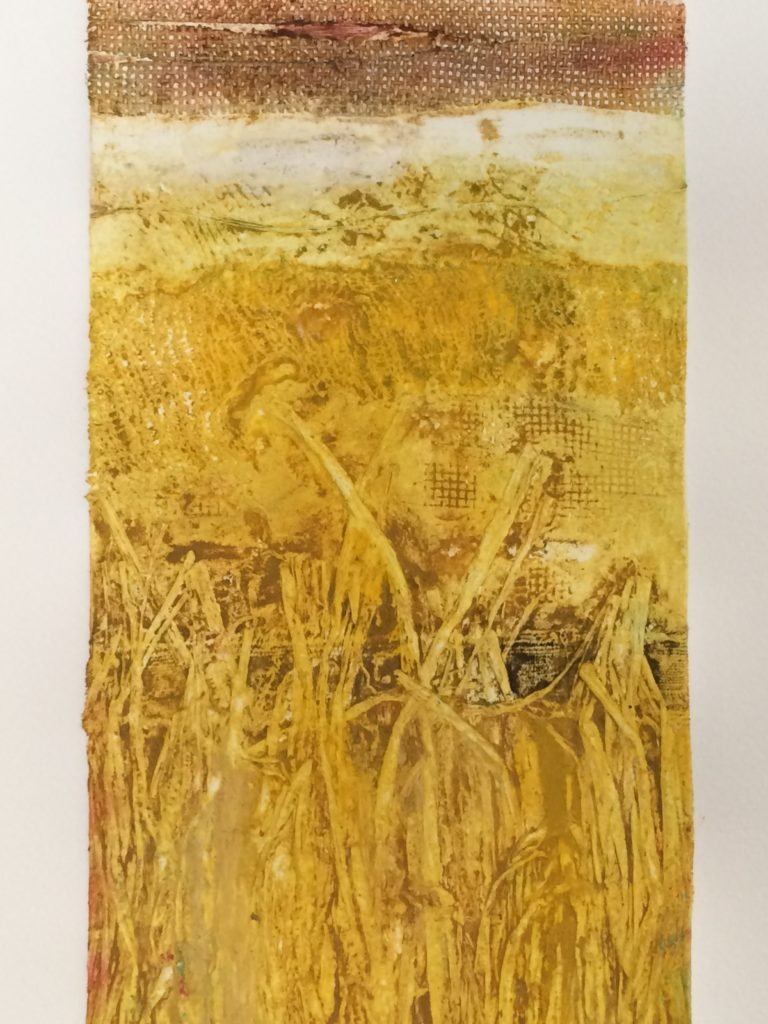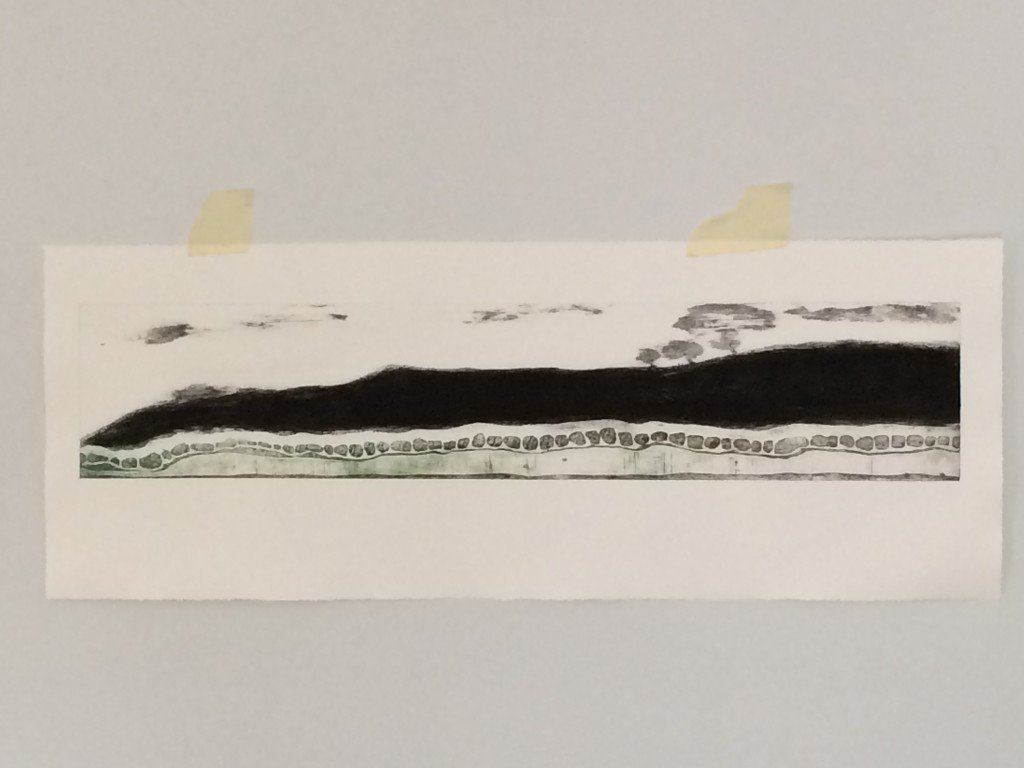In the first ‘Garage Goodies’ post, I wrote about the making of a series of plates at a common size, but widely varying materials.
As ever, I was unsure about how the plates would print, as some of the materials used, such as raffia, were likely to become heavily compressed going through the printing press. Other plates made with various fabric offcuts, filler and crackle paste ended up being as much an experiment in inking and use of colours to make imagined landscapes. The results were surprising, positive and very encouraging for future directions within the collagraph technique.
Remember this plate?
Raffia, carborundum powder and varnishes on a birch plywood base board
Here are some of the prints…
…and closeups
Above is a semi-abstract landscape image from the series. On the plate, the wheat field section was made using raffia, whilst other areas were created using plastic fruit bags, filler and fabric edging.
This one (above) was an interesting experiment. I returned to the techniques I used for my first tentative forays into collagraphs – scoring, cutting and peeling away the surface of mount board. I even had my first attempt at multiple impression, or registration printing. That wasn’t very successful, as the deckle edging of the Somerset paper could not be accurately positioned for the second and third printings. To get this right would have meant losing those interesting edge details on the paper. Still, I learnt a lot in the process – something I’ll definitely return to fairly soon. The print shown here was inked for a single impression (no registration needed).
There are another 5-6 plates yet to be printed, each with different textured materials and colour combinations. Should be fun!
Find all my posts about Art Printworks stories on Twitter at: #artprintstories











